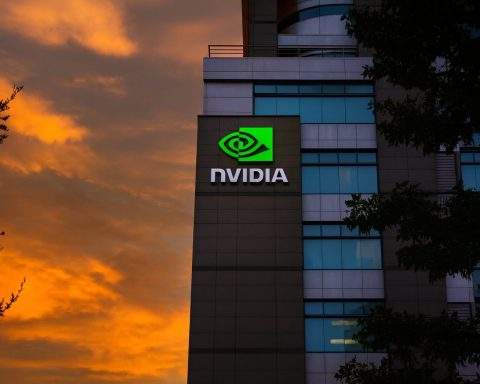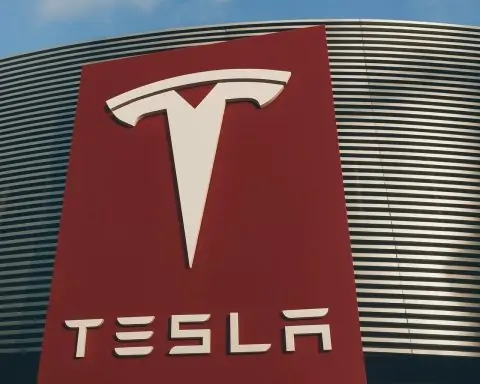Published: November 24, 2025 – U.S. markets session preview
XPeng stock (NYSE: XPEV) heads into the Monday, November 24, 2025 session in a tricky spot: the Chinese EV maker just delivered blowout third‑quarter results, crossed the 1‑million‑vehicle production milestone, and hit its full‑year 2025 sales target two months early—yet the shares have pulled back after management issued a cautious outlook for the fourth quarter. [1]
Below is a deep dive into where XPeng stands today, what’s driving XPEV’s price action, and the key catalysts investors will be watching as trading resumes.
XPeng stock price today: where XPEV stands before the November 24 session
As of the latest close on Friday, November 21, 2025, XPeng’s U.S.-listed shares finished at $20.36. That’s the most recent official closing price reported for XPEV and puts the stock down from the immediate post‑earnings levels earlier in the month. [2]
Despite the recent pullback, XPeng remains one of 2025’s standout EV names:
- Year to date, XPEV is up around 70–75%, according to performance data that show a roughly 72% gain for 2025 so far. [3]
- The stock has retreated more than 10% since its Q3 earnings week, when it traded around $22.43 on November 17, versus a 52‑week high near $28.24. [4]
In other words, XPeng enters the November 24 session as:
- A big 2025 winner among EV stocks,
- But trading well below its recent highs,
- With sentiment reset by softer‑than‑expected guidance.
For active traders and longer‑term investors alike, today’s trading will be about deciding whether that reset now properly reflects the risks—or still leaves XPEV priced for perfection.
Q3 2025 earnings: record growth, margins above 20%, losses sharply narrower
XPeng’s latest quarterly report, released on November 17, was objectively strong on almost every operational metric:
- Revenue: Q3 2025 revenue came in at RMB 20.38 billion, up about 102% year over year. [5]
- Deliveries: XPeng delivered 116,007 vehicles in the quarter, a 149% year‑on‑year surge and another all‑time high, marking its fourth consecutive record quarter of deliveries. [6]
- Margins:
- Gross margin reached a record 20.1%, up from 15.3% a year ago.
- Vehicle margin improved to 13.1%, helped by cost reductions and better scale. [7]
- Profitability trend:
Management has explicitly stated that it aims to achieve quarterly profitability in Q4 2025, a milestone that would mark a major turning point for the company if it can deliver. [10]
From a fundamentals standpoint, Q3 showed XPeng moving out of “cash‑burning startup” territory and closer to a scaled, margin‑expanding EV manufacturer with meaningful software and service revenue.
So why did XPeng stock fall after such strong numbers?
The short answer: guidance and expectations.
Cautious Q4 revenue outlook
XPeng guided Q4 2025 revenue to RMB 21.5–23.0 billion, well below the ~RMB 26 billion consensus estimate compiled by LSEG. [11]
That still represents around 38–44% year‑on‑year growth, but it’s a sharp deceleration from Q3’s triple‑digit revenue and delivery growth. [12]
Investors are wrestling with several issues:
- China’s EV price war remains intense, pressuring average selling prices and margins.
- XPeng is leaning heavily into the mid‑ to low‑end Mona M03 brand, developed with ride‑hailing giant DiDi, which some analysts worry dilutes XPeng’s premium brand positioning. [13]
- After a year in which the stock has more than doubled, expectations were exceptionally high going into earnings. [14]
Analysts at several firms have highlighted that the guidance implies slower volume growth ahead—XPeng is forecasting Q4 deliveries of 125,000–132,000 units, versus 149% growth in Q3, and that gap between the growth trajectory and the valuation has triggered profit‑taking. [15]
Valuation premium adds pressure
Fundamentally oriented research has pointed out that XPeng trades at about 2x price‑to‑sales, compared with roughly 0.8x for the U.S. auto industry and around 1.4x for peers—meaning the stock still carries a growth premium even after the pullback. [16]
When a stock with:
- a rich sales multiple,
- a still‑loss‑making bottom line, and
- a triple‑digit YTD gain
then delivers guidance that’s merely “good” rather than spectacular, the usual result is exactly what we’ve seen: a sharp reset in the share price.
Major tailwinds: 1 million vehicles, early sales target hit, and a growing Chinese NEV market
Despite the guidance‑driven volatility, XPeng enters today’s session with real momentum in the underlying business.
1 millionth vehicle produced – with Mona M03 doing heavy lifting
On November 22, XPeng announced its 1,000,000th vehicle had rolled off the production line. It took the company 82 months to produce its first 500,000 vehicles—but only 14 months to go from 500,000 to 1 million, highlighting just how quickly its scale is ramping. [17]
A big contributor is the Mona M03, XPeng’s mass‑market compact EV:
- Mona M03 accounts for about one‑fifth of XPeng’s cumulative 1 million sales.
- Deliveries of the M03 alone hit 200,000 units in just 14 months. [18]
2025 sales target reached two months early
XPeng has also already exceeded its 2025 sales target, according to data from Yiche Ranking summarised by CarNewsChina:
- Target for 2025: 350,000 vehicles
- Actual sales Jan–Oct:355,209 vehicles
- That’s 101.5% of the full‑year goal with two months left in the year. [19]
Only three NEV brands—XPeng, Leapmotor, and Xiaomi Auto—are on track to meet their annual sales targets, underscoring XPeng’s relative strength in a crowded field. [20]
Chinese NEV demand is still growing
While competition is fierce, the overall pie is expanding:
- From November 1–16, China’s passenger NEV retail sales reached 554,000 units, up 2% year on year.
- NEVs accounted for 62.5% of passenger‑vehicle retail during that period and 53.1% year to date.
- Total NEV retail sales YTD stand at 10.7 million units, up 21% versus last year. [21]
Those figures suggest XPeng is competing in a high‑growth core segment of China’s auto market, even as the broader passenger-vehicle market slows.
Volkswagen partnership: charging, software and chips as long‑term catalysts
One of the biggest strategic reasons investors follow XPeng stock is its deepening alliance with Volkswagen Group, which touches charging, vehicle platforms and software.
Super‑fast charging network across China
In early 2025, XPeng and Volkswagen’s China unit announced a plan to build more than 20,000 super‑fast charging units across 420 cities, jointly operated and accessible to both brands’ customers. [22]
The project:
- Leverages XPeng’s high‑power, liquid‑cooled charging technology,
- Should enhance the ownership experience for both XPeng and VW drivers, and
- Positions XPeng as an infrastructure partner, not just an automaker.
Co‑developed EVs and electronics architecture
Volkswagen has also expanded its strategic collaboration with XPeng to co‑develop electronics/electrical (E/E) architecture for a broader range of models built “in China, for China.” [23]
At the same time, VW’s joint venture with Horizon Robotics is designing a high‑performance chip for smart‑driving applications in its next‑generation Chinese vehicles—part of VW’s push to catch up with local rivals in intelligent driving. [24]
For XPeng investors, these moves matter because they:
- Validate XPeng’s software and intelligent‑driving capabilities,
- Open up third‑party tech and service revenue streams (as hinted by XPeng’s fast‑growing service and tech‑R&D revenue in Q3), and
- Potentially lower risk by tying XPeng’s fate to a global OEM giant. [25]
XPeng’s AI, robotaxis and humanoid robot “Iron”: high reward, high risk
XPeng is increasingly pitching itself not just as an EV maker, but as a “physical AI” company.
Physical AI and autonomous driving
At its recent World AI Day, XPeng:
- Described a “Physical AI” strategy focused on how AI models interact with and move through the real world.
- Highlighted its VLA 2.0 (Vision–Language–Action) model, tuned to process massive amounts of driving data more efficiently and behave more like a human driver.
- Said it has accumulated around 100 million hours of driving video data, which it uses to train long‑tail driving scenarios and improve its intelligent‑driving stack. [26]
The Mona M03 and newer P7 models already showcase this software in real‑world driving, with increasingly capable urban navigation and parking assistance.
Humanoid robot “Iron” and flying cars
XPeng is also placing bold bets beyond cars:
- Its humanoid robot “Iron” is designed with human‑like behavior and emotional interaction (yes, including the ability to hug).
- CEO He Xiaopeng told analysts the company aims to mass‑produce Iron by late 2026 and eventually sell 1 million units per year by 2030, with early roles in retail and tour‑guide environments. [27]
- XPeng plans to roll out three robotaxi models next year and begin production of a flying car around 2026, further blurring the line between automaker and robotics/AI company. [28]
For the stock, these initiatives are a two‑edged sword:
- Bullish angle: They create huge optionality and help XPeng stand out in a crowded EV field, potentially justifying a higher multiple if the projects succeed.
- Bearish angle: They require heavy R&D spending, which can delay profitability and make earnings more volatile in the medium term. [29]
Valuation check: how expensive is XPeng stock now?
Heading into November 24, XPeng sits in a middle zone: no longer the bargain it was at 2024’s lows, but also well off recent peaks.
Key valuation context:
- Price: $20.36 at the last close. [30]
- 2025 performance: Up roughly 70–75% so far this year. [31]
- 52‑week range: The shares traded as high as about $28.24, and have recently pulled back more than 10% from the post‑earnings level around $22. [32]
- Price‑to‑sales: Roughly 2x trailing sales, well above the auto‑industry average (~0.8x) and peer group (~1.4x), according to fundamental data aggregators. [33]
Some Wall Street firms still see upside: for example, a recent note from Goldman Sachs raised its XPEV price target to $25, citing XPeng’s growth outlook into 2026 even as the stock dropped around 10% on its Q3 report. [34]
But that upside case assumes XPeng:
- Hits or beats its Q4 profitability goal,
- Maintains double‑digit delivery growth in 2026, and
- Successfully monetizes its tech partnerships and AI roadmap.
If those assumptions slip, the current premium could prove hard to sustain.
What XPeng investors should watch today and this week
As markets open for the November 24, 2025 session, XPeng watchers will be focused on a few key themes:
- Price action vs. the broader EV group
- Does XPEV continue to lag after earnings, or do buyers step in now that the stock is ~25–30% below its 52‑week high? [35]
- New data points from China’s NEV market
- Any fresh figures from the CPCA on November sales or updated market‑share data for XPeng could move sentiment, especially given November’s strong NEV penetration numbers. [36]
- Follow‑through on VW and third‑party tech revenues
- Investors will be watching XPeng’s “service and other revenue” line for signs that licensing its technology—whether to Volkswagen or other automakers—is becoming a meaningful profit driver. [37]
- Updates on profitability guidance
- Any comments from management or analysts around XPeng’s Q4 margin trajectory and breakeven timeline could quickly shift expectations, given how close the company already is to non‑GAAP profitability. [38]
- Newsflow on AI, robotaxis, and Iron
- Even small announcements—pilot robotaxi programs, store deployments of the Iron robot, or new software releases—can reinforce or undermine the “AI platform” narrative that some investors are paying up for. [39]
Bottom line: XPeng stock on November 24, 2025
Going into today’s session, XPeng sits at an interesting crossroads:
- Execution is improving fast: record deliveries, margins over 20%, sharply reduced losses, and a credible path toward near‑term profitability. [40]
- Scale is now undeniable: the company has produced 1 million vehicles, hit its 2025 volume target early, and is helping to shape China’s EV infrastructure alongside Volkswagen. [41]
- But expectations are high: the stock still trades at a premium sales multiple and has already delivered strong gains this year, even after the recent sell‑off. [42]
For bullish investors, the recent pullback may look like a reset in a still‑intact growth story, supported by powerful structural trends in China’s NEV market and XPeng’s tech ambitions.
For more cautious investors, XPeng remains a high‑beta, high‑expectation EV and AI play, where continued price wars, heavy R&D spending and any stumble on Q4 profitability could trigger further volatility.
Either way, as trading gets under way on November 24, 2025, XPeng will be one of the most closely watched EV stocks on the board.
Note: This article is for informational purposes only and does not constitute financial advice. Always do your own research and consider consulting a licensed financial advisor before making investment decisions.
References
1. cnevpost.com, 2. www.macrotrends.net, 3. www.macrotrends.net, 4. www.tikr.com, 5. www.prnewswire.com, 6. cnevpost.com, 7. cnevpost.com, 8. cnevpost.com, 9. cnevpost.com, 10. cnevpost.com, 11. www.reuters.com, 12. www.barrons.com, 13. www.reuters.com, 14. www.reuters.com, 15. www.barrons.com, 16. simplywall.st, 17. carnewschina.com, 18. carnewschina.com, 19. carnewschina.com, 20. carnewschina.com, 21. cnevpost.com, 22. www.investopedia.com, 23. ir.xiaopeng.com, 24. www.reuters.com, 25. cnevpost.com, 26. insideevs.com, 27. timesofindia.indiatimes.com, 28. timesofindia.indiatimes.com, 29. www.reuters.com, 30. www.macrotrends.net, 31. www.macrotrends.net, 32. www.tikr.com, 33. simplywall.st, 34. www.investing.com, 35. www.macrotrends.net, 36. cnevpost.com, 37. cnevpost.com, 38. cnevpost.com, 39. insideevs.com, 40. cnevpost.com, 41. carnewschina.com, 42. simplywall.st










